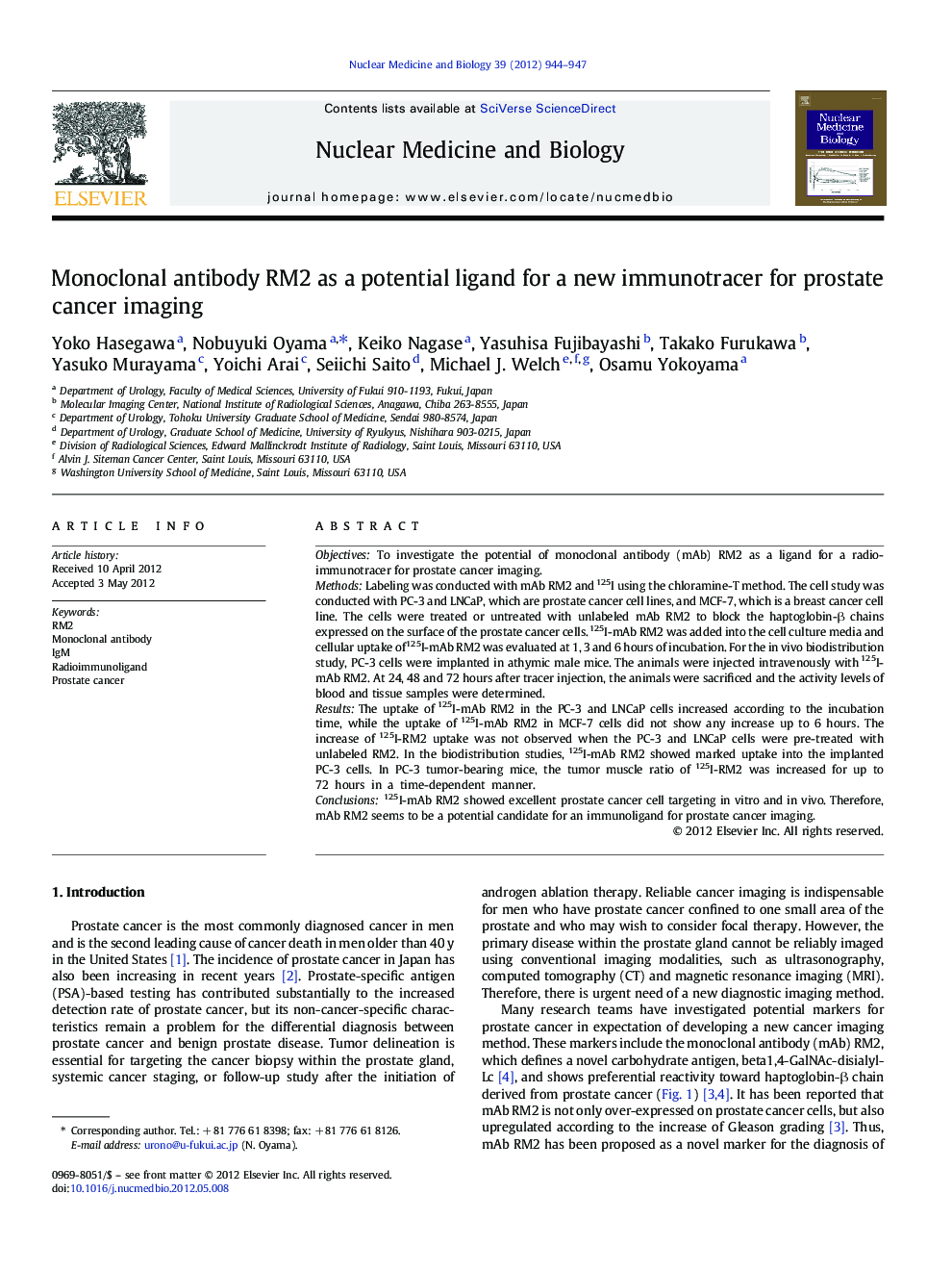| Article ID | Journal | Published Year | Pages | File Type |
|---|---|---|---|---|
| 2153869 | Nuclear Medicine and Biology | 2012 | 4 Pages |
ObjectivesTo investigate the potential of monoclonal antibody (mAb) RM2 as a ligand for a radioimmunotracer for prostate cancer imaging.MethodsLabeling was conducted with mAb RM2 and 125I using the chloramine-T method. The cell study was conducted with PC-3 and LNCaP, which are prostate cancer cell lines, and MCF-7, which is a breast cancer cell line. The cells were treated or untreated with unlabeled mAb RM2 to block the haptoglobin-β chains expressed on the surface of the prostate cancer cells. 125I-mAb RM2 was added into the cell culture media and cellular uptake of 125I-mAb RM2 was evaluated at 1, 3 and 6 hours of incubation. For the in vivo biodistribution study, PC-3 cells were implanted in athymic male mice. The animals were injected intravenously with 125I-mAb RM2. At 24, 48 and 72 hours after tracer injection, the animals were sacrificed and the activity levels of blood and tissue samples were determined.ResultsThe uptake of 125I-mAb RM2 in the PC-3 and LNCaP cells increased according to the incubation time, while the uptake of 125I-mAb RM2 in MCF-7 cells did not show any increase up to 6 hours. The increase of 125I-RM2 uptake was not observed when the PC-3 and LNCaP cells were pre-treated with unlabeled RM2. In the biodistribution studies, 125I-mAb RM2 showed marked uptake into the implanted PC-3 cells. In PC-3 tumor-bearing mice, the tumor muscle ratio of 125I-RM2 was increased for up to 72 hours in a time-dependent manner.Conclusions125I-mAb RM2 showed excellent prostate cancer cell targeting in vitro and in vivo. Therefore, mAb RM2 seems to be a potential candidate for an immunoligand for prostate cancer imaging.
